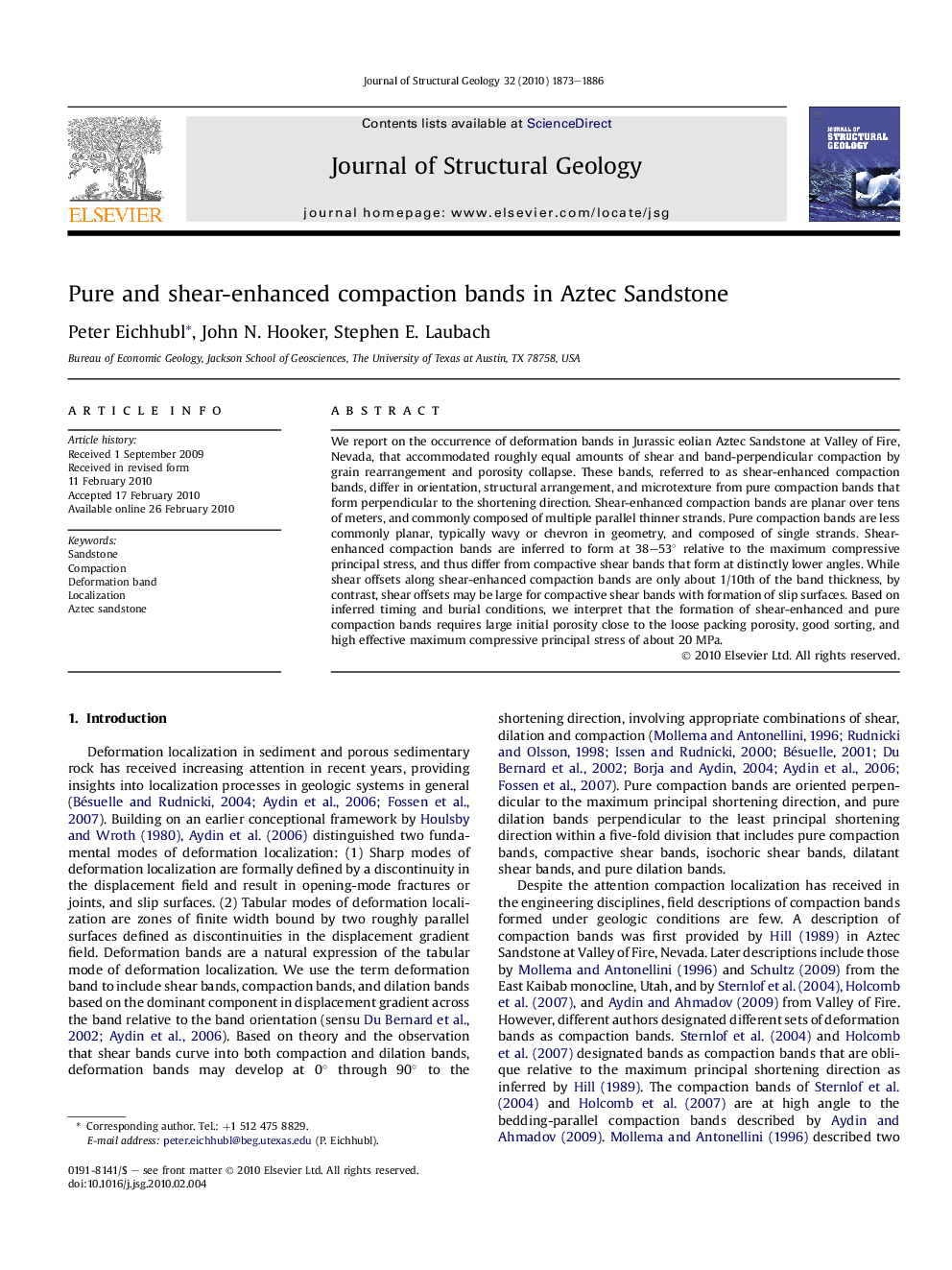| Article ID | Journal | Published Year | Pages | File Type |
|---|---|---|---|---|
| 6445159 | Journal of Structural Geology | 2010 | 14 Pages |
Abstract
We report on the occurrence of deformation bands in Jurassic eolian Aztec Sandstone at Valley of Fire, Nevada, that accommodated roughly equal amounts of shear and band-perpendicular compaction by grain rearrangement and porosity collapse. These bands, referred to as shear-enhanced compaction bands, differ in orientation, structural arrangement, and microtexture from pure compaction bands that form perpendicular to the shortening direction. Shear-enhanced compaction bands are planar over tens of meters, and commonly composed of multiple parallel thinner strands. Pure compaction bands are less commonly planar, typically wavy or chevron in geometry, and composed of single strands. Shear-enhanced compaction bands are inferred to form at 38-53° relative to the maximum compressive principal stress, and thus differ from compactive shear bands that form at distinctly lower angles. While shear offsets along shear-enhanced compaction bands are only about 1/10th of the band thickness, by contrast, shear offsets may be large for compactive shear bands with formation of slip surfaces. Based on inferred timing and burial conditions, we interpret that the formation of shear-enhanced and pure compaction bands requires large initial porosity close to the loose packing porosity, good sorting, and high effective maximum compressive principal stress of about 20 MPa.
Related Topics
Physical Sciences and Engineering
Earth and Planetary Sciences
Geology
Authors
Peter Eichhubl, John N. Hooker, Stephen E. Laubach,
